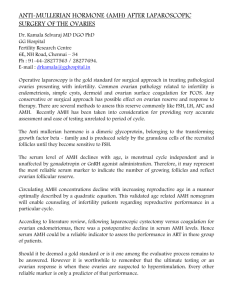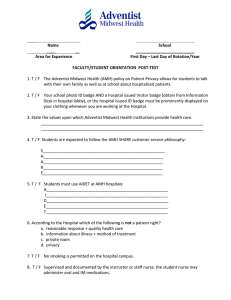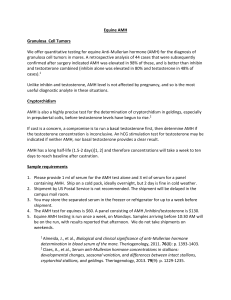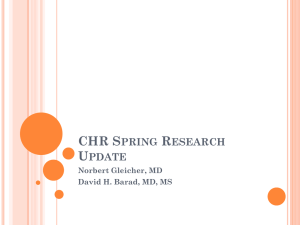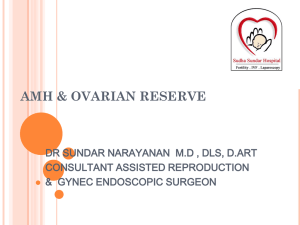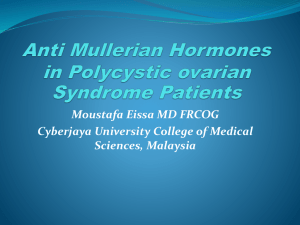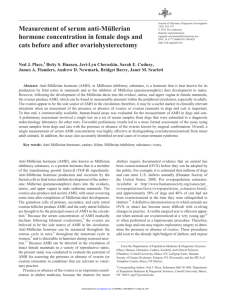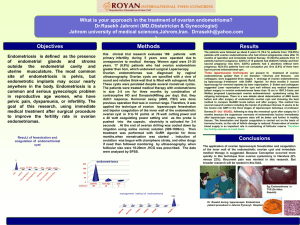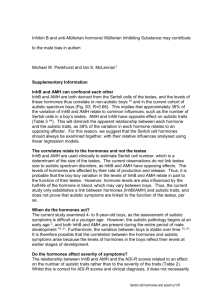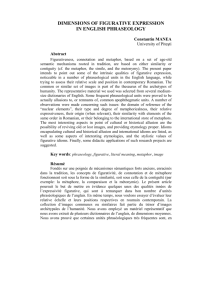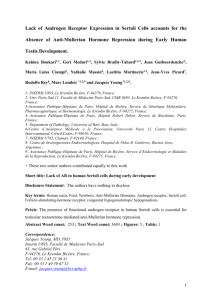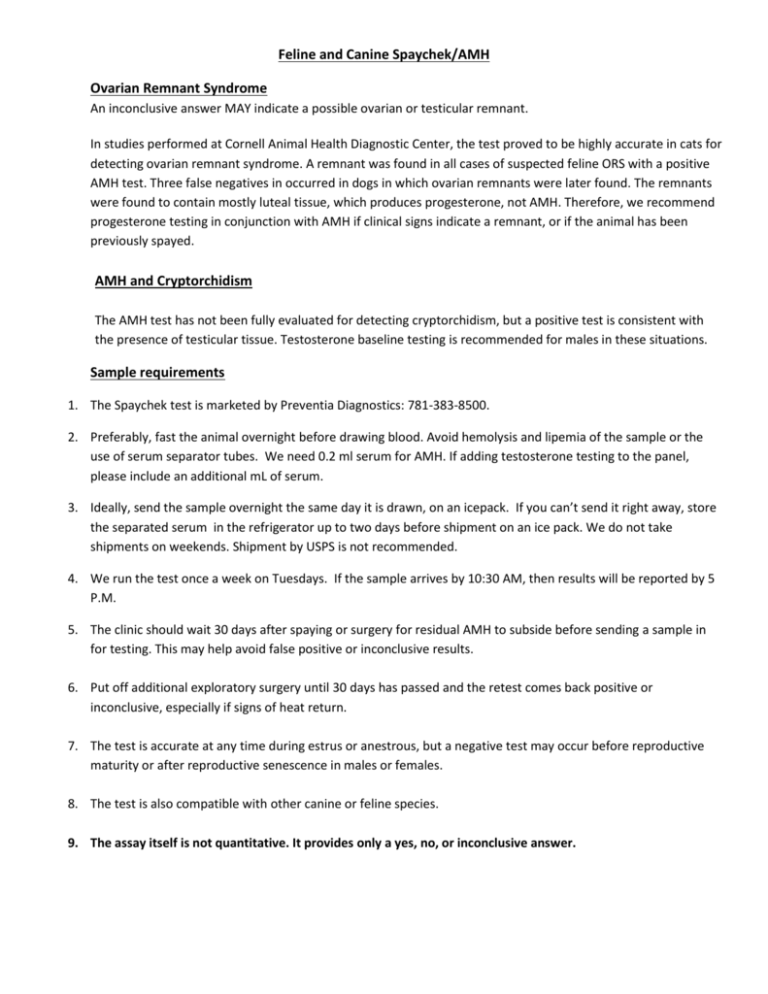
Feline and Canine Spaychek/AMH
Ovarian Remnant Syndrome
An inconclusive answer MAY indicate a possible ovarian or testicular remnant.
In studies performed at Cornell Animal Health Diagnostic Center, the test proved to be highly accurate in cats for
detecting ovarian remnant syndrome. A remnant was found in all cases of suspected feline ORS with a positive
AMH test. Three false negatives in occurred in dogs in which ovarian remnants were later found. The remnants
were found to contain mostly luteal tissue, which produces progesterone, not AMH. Therefore, we recommend
progesterone testing in conjunction with AMH if clinical signs indicate a remnant, or if the animal has been
previously spayed.
AMH and Cryptorchidism
The AMH test has not been fully evaluated for detecting cryptorchidism, but a positive test is consistent with
the presence of testicular tissue. Testosterone baseline testing is recommended for males in these situations.
Sample requirements
1. The Spaychek test is marketed by Preventia Diagnostics: 781-383-8500.
2. Preferably, fast the animal overnight before drawing blood. Avoid hemolysis and lipemia of the sample or the
use of serum separator tubes. We need 0.2 ml serum for AMH. If adding testosterone testing to the panel,
please include an additional mL of serum.
3. Ideally, send the sample overnight the same day it is drawn, on an icepack. If you can’t send it right away, store
the separated serum in the refrigerator up to two days before shipment on an ice pack. We do not take
shipments on weekends. Shipment by USPS is not recommended.
4. We run the test once a week on Tuesdays. If the sample arrives by 10:30 AM, then results will be reported by 5
P.M.
5. The clinic should wait 30 days after spaying or surgery for residual AMH to subside before sending a sample in
for testing. This may help avoid false positive or inconclusive results.
6. Put off additional exploratory surgery until 30 days has passed and the retest comes back positive or
inconclusive, especially if signs of heat return.
7. The test is accurate at any time during estrus or anestrous, but a negative test may occur before reproductive
maturity or after reproductive senescence in males or females.
8. The test is also compatible with other canine or feline species.
9. The assay itself is not quantitative. It provides only a yes, no, or inconclusive answer.
Anti-Mullerian Hormone (AMH) Spaychek ELISA Interpretations:
The qualitative AMH test for dogs and cats is meant to distinguish between spayed and ovarian intact females or
intact or neutered males, after they have reached the age of sexual maturity (this varies by breed). A negative
AMH test is consistent with a spayed female or neutered male, whereas a positive AMH test indicates the
presence of ovaries or testes. An inconclusive AMH result cannot distinguish between the intact and spayed or
neutered condition.
The AMH test has been evaluated for the detection of ovarian remnant syndrome and a positive test is
consistent with the presence of ovarian tissue. A negative test does not rule out the ovarian remnant syndrome.
Intact females or males tested before reproductive maturity or after reproductive senescence may have a
negative AMH test. Progesterone baseline testing is recommended for females in conjunction with AMH if
clinical signs are consistent with a remnant or if the animal has been previously spayed
The AMH test has not been fully evaluated for detecting cryptorchidism, but a positive test is consistent with the
presence of testicular tissue. Testosterone baseline testing is recommended for males in these situations.

